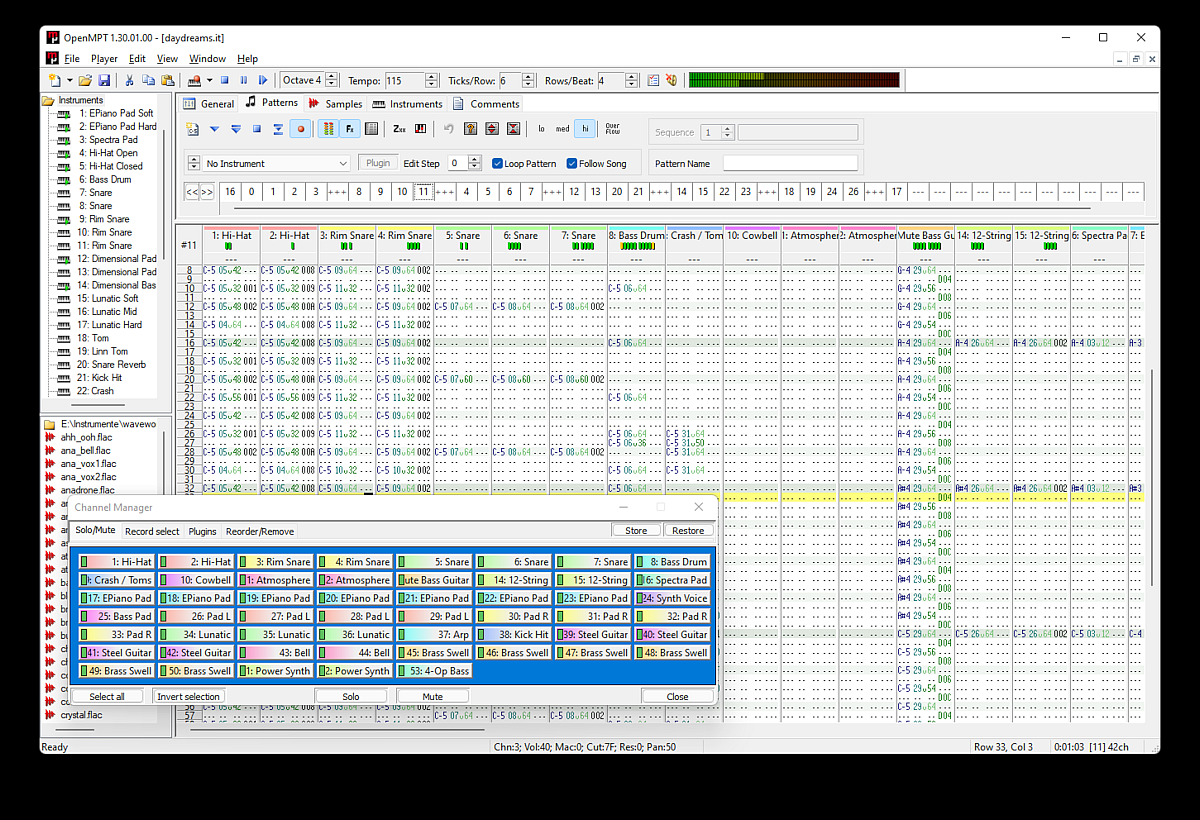

Parameterĭisables surround playback on the current channel. Using any of these commands outside of the MPTM format (except S91 which is native to only the IT and MPTM formats) is considered a ModPlug hack. The sound control effect ( X9x in the XM format, S9x in the S3M / IT / MPTM formats) can be used to control various aspects of sound playback. The following table explains the meaning of every possible x parameter: The Retrigger command ( Rxy in the XM format, Qxy in the S3M / IT / MPTM formats) does not only retrigger the note every y ticks, but also changes the note volume depending on the x value.
#MOD XM S3M OPENMTP MOD#
While they are supported by some MOD / XM players, they should be avoided. † The Random waveforms are not supported by ProTracker and FastTracker. So at a vibrato speed of 2, the vibrato waveform repeats after 32 ticks. This waveform type is exclusive to the MOD and XM formats.Įvery oscillator waveform is 64 points long, and the speed parameter denotes by how many points per tick the play position is advanced. Retrigger means that the oscillator waveform is played from its starting point when a new note is played.Ĭontinue means that the waveform continues at its last playback position when a new note is played. They can be changed using special commands the possible parameters of these commands are listed here. Some oscillator effects (namely Vibrato, Tremolo and Panbrello) use preset oscillator waveforms. Some common look-up table effects are described below. Depending on the effect, different parameters might do completely different things. Most effect parameters follow a simple scheme, but some effects also use a look-up table for their parameters. Linear Frequency Slides are not available in the MOD and S3M formats. The period of a frequency can be calculated by dividing 3,546,895 by the frequency (3,579,364 in the XM format). This means that the lower the current note, the smaller the effect of one pitch slide unit, and the higher the note, the bigger the effect is. Otherwise, the unit of a pitch sliding effect is one period, a metric inverse to frequency. EEx or FEx) units are equal to 1⁄ 64 of a semitone. Exx or Gxx in the IT / MPTM format) is equal to 1⁄ 16 of a semitone. If Linear Frequency Slides are enabled, each unit of a pitch sliding effect (e.g. Entering out-of-range values is not recommended as they might be interpreted differently by non-conforming players. Note that the parameter range of some commands is limited, such as the XM command Cxx, whose maximum value is 40h (64). From there, you can adjust the effect parameters using sliders and see their meaning. If you do not wish to manually convert decimal to hexadecimal and vice versa, you can double-click on a pattern cell or press the ▤ Application key (by default) to open the Note Properties dialog. Similarly, 29h would mean 2 and 9, and E8h would mean 14 and 8. If the notation is xy, it means that for x and y each, a 1-digit hexadecimal number is expected.įor this notation, each of the digits in 62h would be read separately - as 6 and 2. If the notation for a parameter is given as xx, it means that a 2-digit hexadecimal number is expected.įor this notation, 62h would be equal to 98, 29h would be equal to 41, and E8h would be equal to 232. An effect command consists of one character (the “effect letter”) followed by the value that will be applied (the “parameter”), which is a hexadecimal number in the effect column and a decimal number in the volume column.


 0 kommentar(er)
0 kommentar(er)
